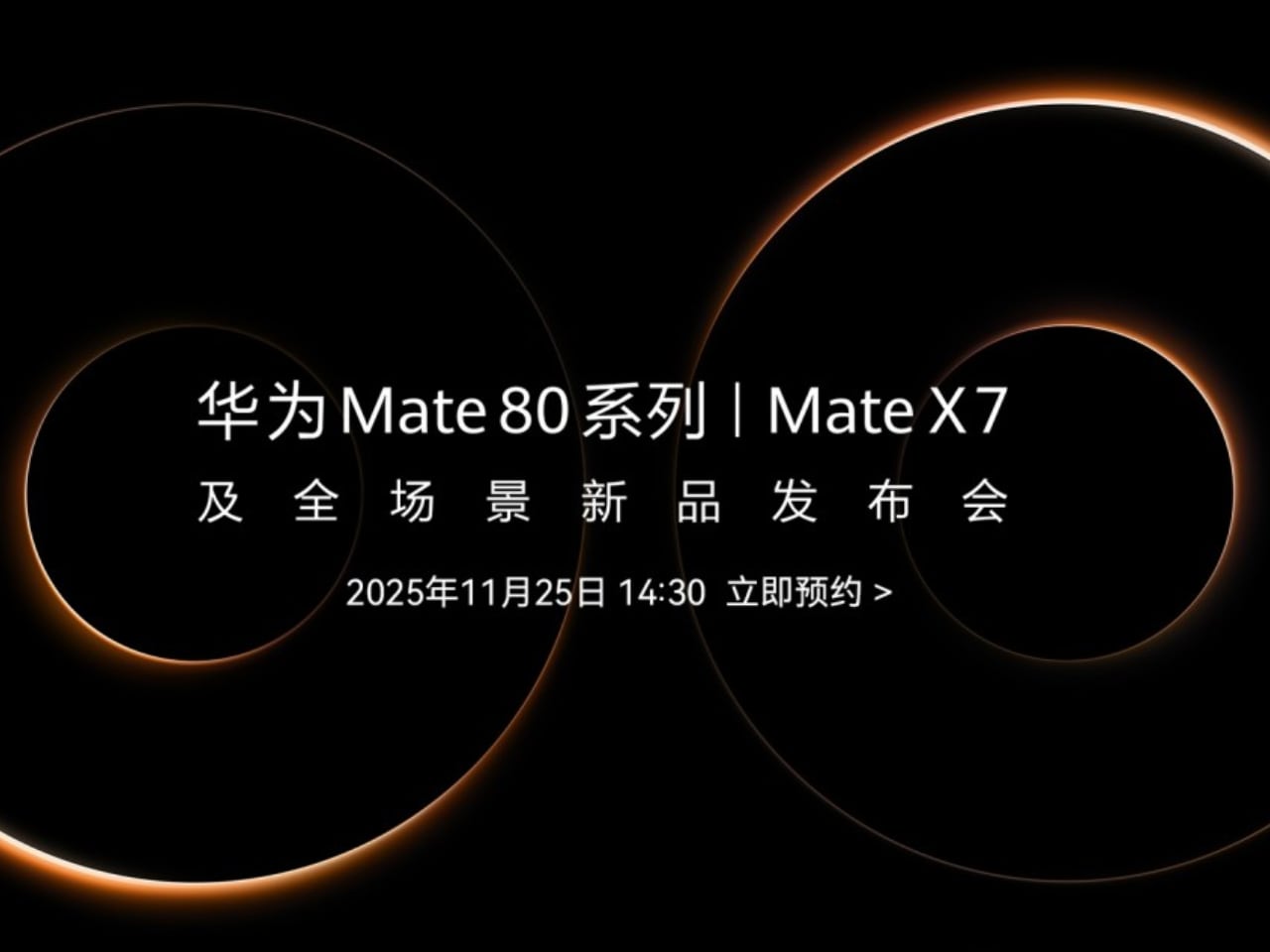Huawei just confirmed November 25 as the official launch date for its Mate 80 series, and the company isn’t holding back. Four distinct models, each with its own camera architecture and design identity. The standout? A flagship variant packing 20GB of RAM and an octagon-shaped camera module that breaks from the circular designs dominating the smartphone industry.
Designer: Huawei
This is Huawei’s play for design differentiation in a market where most flagship phones look nearly identical from the back. The Mate 80 lineup spans from the accessible base model through to the RS Ultimate Design, a halo product that signals where Huawei sees premium smartphone design heading.
Four Models, Four Design Approaches
The Mate 80 and Mate 80 Pro share a circular rear camera module housing three sensors, including a periscope telephoto lens. Both phones feature dual front cameras with 3D face unlock technology. It’s a refined, approachable design that builds on Huawei’s established camera bump aesthetic.
The Mate 80 Pro Max steps up with a quad-camera system that includes dual periscope telephoto lenses. That’s two dedicated telephoto sensors for optical zoom flexibility, a configuration that gives photographers multiple focal length options without digital cropping. Dual front cameras maintain consistency across the upper-tier models.
Then there’s the Mate 80 RS Ultimate Design. The octagon-shaped camera module is the immediate visual differentiator, a geometric departure that catches attention without feeling gimmicky. It houses four rear sensors and pairs with dual front cameras, but the design statement is what matters here. Huawei is using the RS Ultimate to establish a distinct visual identity for its most premium offering.
Color Palettes Reflect Market Positioning
Huawei assigned different color families to each tier, reinforcing the hierarchy through material and finish choices.
The Mate 80 and Mate 80 Pro come in Dawn Gold, Obsidian Black, Snowy White, and Spruce Green. These are accessible, versatile colorways that work across different user preferences without pushing too far into statement territory.
The Mate 80 Pro Max gets Polar Night Black, Polar Silver, Polar Day Gold, and Aurora Blue. The naming convention evokes extreme environments and natural phenomena, positioning this model as the performance flagship with colors that suggest technical capability.
The RS Ultimate Design narrows to three options: Dark Black, Pure White, and Hibiscus. That last color, Hibiscus, has generated notable attention in early discussions. It’s a bold, design-forward choice that signals this phone is as much about aesthetic expression as technical specifications.
RAM Leadership: 20GB in the RS Ultimate Design
The Mate 80 RS Ultimate Design ships with 20GB of RAM paired with either 512GB or 1TB of storage. That’s the highest RAM configuration in the entire lineup, positioning this model for users running multiple resource-intensive applications simultaneously or future-proofing for increasingly demanding mobile workflows.
The base Mate 80 and Mate 80 Pro offer 12GB/256GB, 12GB/512GB, and 16GB/512GB configurations, with the Pro adding a 16GB/1TB option. The Mate 80 Pro Max comes in 16GB/512GB and 16GB/1TB variants. Huawei structured the RAM progression to create clear performance tiers across the lineup.
Launch Strategy: Pre-Orders and Dual Flagship Debut
Huawei opened pre-orders through its Vmall online store ahead of the November 25 launch event. The company is simultaneously unveiling the Mate X7 foldable, positioning the launch as a comprehensive showcase of its flagship smartphone strategy rather than focusing solely on the traditional slab phone format.
The dual launch suggests Huawei sees both form factors as equally important to its premium positioning. The Mate 80 series represents refinement and camera innovation within the established smartphone template, while the Mate X7 addresses users prioritizing screen real estate and multitasking flexibility.
What This Means for the Flagship Race
The Mate 80 lineup shows Huawei using design variation to create meaningful differentiation within a single product family. Most manufacturers rely primarily on camera count and technical specifications to separate models. Huawei added visual language shifts, particularly with the RS Ultimate’s octagon module, to make the hierarchy immediately apparent.
The dual periscope telephoto system in the Pro Max addresses a real pain point for mobile photographers: the gap between primary wide and telephoto focal lengths. Two periscope lenses allow for more granular zoom options and better image quality across the telephoto range.
Whether these design choices translate into market success remains to be seen when the phones launch November 25. But Huawei is clearly betting that distinctive design, aggressive RAM configurations, and advanced camera architectures can carve out space in the competitive flagship smartphone market.
The post Huawei Mate 80 Series: Design Language Evolution and the 20GB RAM Flagship first appeared on Yanko Design.

